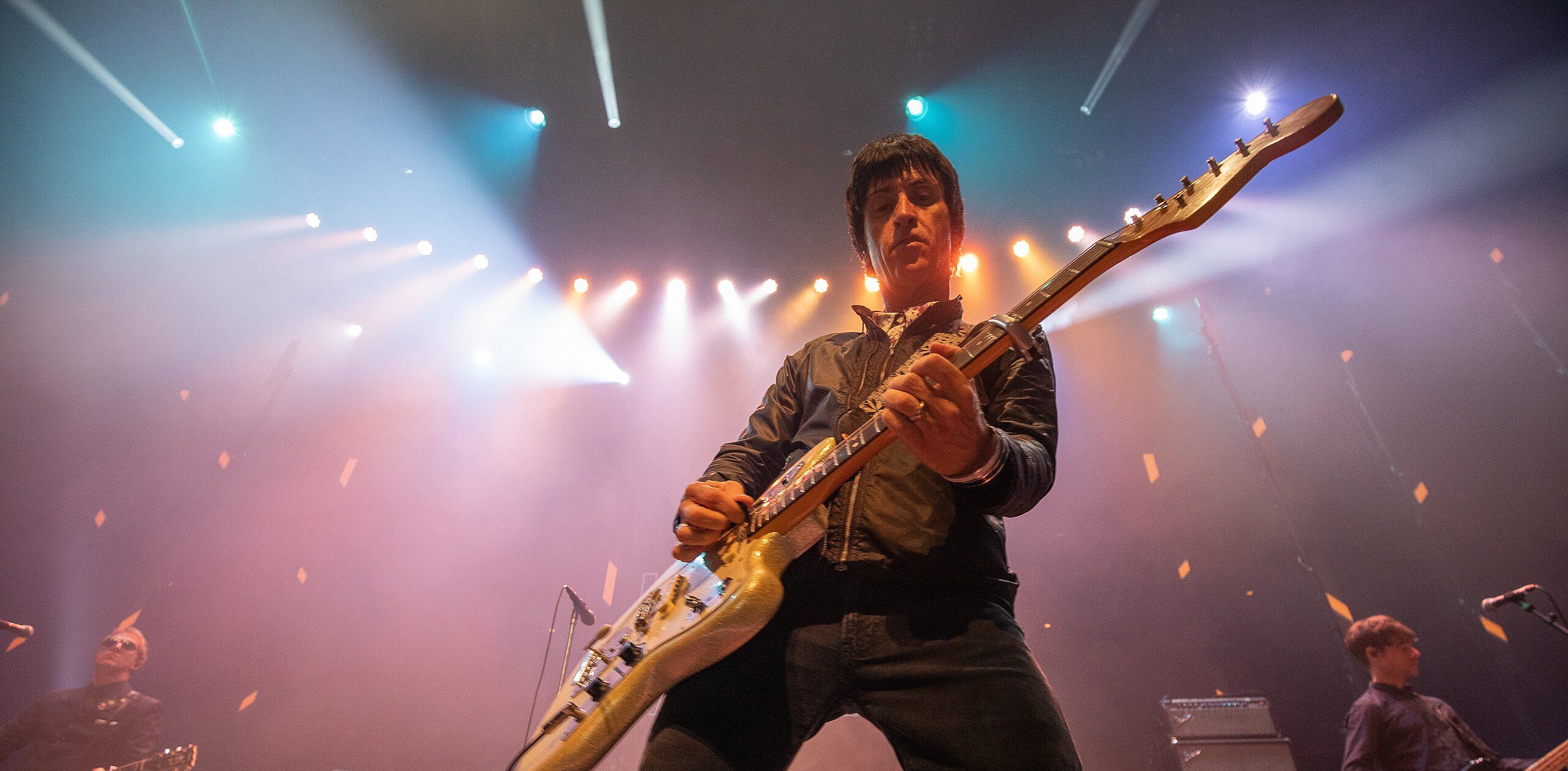
Is Johnny Marr a Good Guitarist? – The Indie Virtuoso
Johnny Marr is a name synonymous with alternative rock. Marr is known not only for his distinctive voice as a guitarist but also for his songwriting prowess. His journey in the music industry has spanned decades, leaving a monumental mark on the landscape of indie rock.
In this blog we will look at Johnny Marr’s guitar skills, exploring the origins of his musical journey. We will also be deciding on whether or not he is a good guitarist or not.
IS Johnny Marr a good guitarist?
Yes. It’s as simple as that, Johnny Marr is a fantastic guitarist who blends a multitude of styles to develop a unique style of his own. This jangle-pop style would be a genre-defining development in alternative and indie rock, defining conventions and setting the tone for indie to erupt into the limelight.
So what is the point of this article you as? Well, it’s to decipher how good Marr was. Was he just decent? or was he a virtuoso? Let’s find out, shall we?
Johnny Marr a quick biography
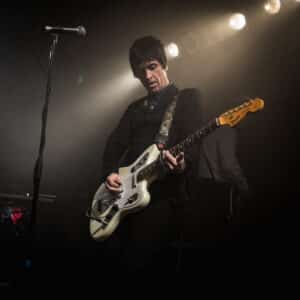
Born on October 31, 1963, in Manchester, England, Johnny Marr, whose real name is John Martin Maher, had a deep-rooted connection to music from an early age. His introduction to the world of music came through his parents, who nurtured his interest in various genres, from rock ‘n’ roll to Motown. It was this eclectic musical upbringing that would influence his unique playing style.
Marr’s fascination with the guitar began at the age of four. This was when he received his first instrument as a gift from his parents, a little toy guitar. Little did they know this is what would set the stage for him becoming a guitar playing legend. By the time he was a teenager, he had already displayed an extraordinary talent for the guitar. He quickly began playing in multiple bands, rubbed shoulders with a multitude of respected musicians.
Marr gets serious about music
Marr’s early musical journey was driven by his want to push the boundaries of his guitar playing. He was deeply influenced by the punk and post-punk movements of the late ’70s and early ’80s, which were taking the UK music world by storm, but he was also heavily influenced by the chucking guitar playing of funk legend “Nile Rodgers”.
This would all spearhead into the formation of The Smiths in 1982. Alongside Stephen Morrissey, the duo became formidable and would produce some of the most iconic songs in alternative rock history. Marr’s jangle pop guitar playing would be the sound that would set the scene for the melancholic tone of the band.
Marr's influences
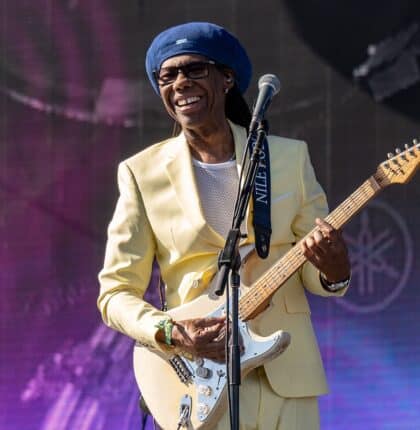
Before we continue I believe to truly appreciate Johnny Marr’s guitar skills, it’s essential to explore the musicians who influenced his style. From Marr’s early exposure to a wide range of genres and to the musicians he played alongside, all had a pivotal role in shaping his guitar style.
Let’s look at three artists that played a large part in creating the jangle pop style.
The Beatles
This may be the most obvious one as most artists in the 1980s would cite The Beatles as influences. Marr was particularly drawn to George Harrison’s melodic lead guitar work. This playing style influenced Marr’s own penchant for crafting memorable guitar hooks. This ideology of intricate guitar hooks is prevalent throughout most of his tracks.
Jimi Hendrix
Jimi Hendrix is a legend in his own right. Again, you’d be hard-pressed to find a guitarist who hasn’t been affected by him in some respect. Hendrix’s groundbreaking use of effects and his ability to push the sonic boundaries of the guitar left an enduring impact on Marr’s approach to experimental guitar techniques.
You can see this come through in the thick chorus and luscious reverbs prominent in The Smiths songs.
Nile Rodgers
Rodgers’ guitar rhythms in disco music, known for their infectious grooves, had a significant influence on Marr’s rhythmic and dance-oriented guitar playing. Marr consistently abandoned the post-punk stereotype of strong bar chords and regular rhythms and instead focused on the chucking and extended chords of funk and disco.
The Diversity of these influences
What sets Johnny Marr apart as a guitarist is his willingness to draw inspiration from a wide range of sources. Marr’s openness to exploring diverse musical styles has enriched his playing and contributed to his status as a versatile and innovative guitarist.
However, the one thing all the artists above have in common is their ability to add melodic intrigue to their songs. All are proficient in adding melodic lines into the rhythm sections of each of their respective songs.
The peak of his guitar power - The Smiths
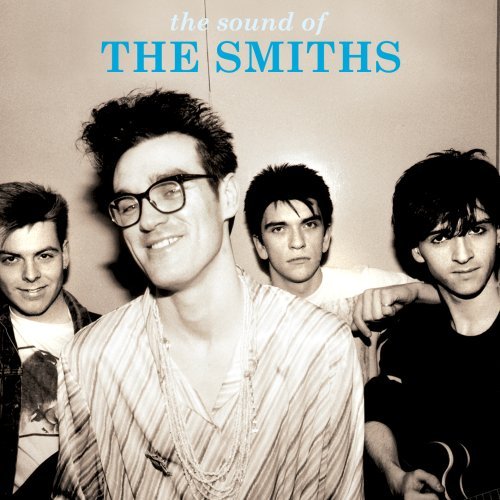
Johnny Marr’s guitar playing ability reached its peak during his time with The Smiths. As mentioned before, the band would became synonymous with his distinctive jangly-pop guitar sound, and this sound would be crucial to the establishment of indie rock. Marr’s pivotal role within and contribution to the band’s iconic sound therefore propelled him into the same realm as the guitarists that he himself had been influenced by himself.
So how was his style so unique
Marr’s guitar sound is described as jangle guitar thanks to its shimmering, melodic quality. Marr possesses an individual ability to create catchy-hooks through his playing, and this is thanks to his outlook on how the guitar should be played. He avoids heavy hit chords and instead prefers to use arpeggios to articulate a melody that passes through the chord progression.
In addition to this, instead of falling into the pentatonic blues style guitar playing, Marr prefers to avoid this and focuses more on the pop melody he can create. He often comments to seeing the guitar as an electronic machine to create a record. This is where his unique playing comes into the forefront.
Let’s look at some techniques which are pivotal to his style…
Jangly Rhythms
Marr’s guitar playing in The Smiths was distinguished by its jangly rhythms, often created through his unique use of open chord voicings and arpeggios. This guitar-style signature became a hallmark of the band’s sound, heard prominently in songs like “This Charming Man” and “Bigmouth Strikes Again.”
Think of the latters opening section, the guitar passes from one chord to another fluidly with a light right-handed approach which strikes with a chucking like rhythm.
Layered Textures
Marr’s guitar parts were always masterfully layered. His meticulous attention to detail was on full display. His ability to weave intricate lead lines alongside intriguing rhythmic strumming and the melodic vocals of Morrissey was unparalleled. This resulted in a lush and multi-dimensional musicality, setting The Smiths apart from their peers.
Arpeggios
Marr’s use of arpeggios in his guitar playing added a distinctive melodic quality to The Smiths’ music. His arpeggio work often served as the emotional underpinning of the songs, contributing to the band’s signature sound. His avoidance of barre chords is prevalent throughout, and prevents them from sounding like every other post-punk band.
Some MarrVellous moments in The Smiths music
Here, we’ll highlight a few of the standout tracks that showcase Marr’s guitar wizardry.
"How Soon Is Now"
Perhaps the most iconic of Marr’s guitar work, although not the best summarisation of his style. The shimmering and hypnotic guitar riff in “How Soon Is Now?” is instantly recognisable. This track certainly showcases the unique compositional ability of Marr.
Marr’s use of effects pedals to create a distinctive tremolo sound added an otherworldly quality to the song. Showcasing his Hendrix influence, the guitar track is laden in effects, feeling distant yet gritty, while also being rhythmically aware.
"There Is a Light That Never Goes Out"
Marr’s delicate, melancholic arpeggio work in “There Is a Light That Never Goes Out” perfectly complements Morrissey’s lyrical introspection. Marr slinks between the vocal lines perfectly underpinning the melancholic feel. A true example of the jangle-pop rhythms, the layered chord patterns behind the arpeggios showcases the active right-hand of Marr.
The combination of Marr’s evocative guitar and Morrissey’s poignant vocals creates a haunting and beautiful atmosphere. Marr manages to do all of this, while also providing enough space to let every other part (including a string section) hold their own room. This is something that is only achievable thanks to the arpeggios.
"The Boy With a Thorn in his side"
Marr’s rhythmic guitar work in “The Boy with the Thorn in His Side” showcases his ability to craft infectious melodies. The song’s uplifting guitar lines, which include an abundance of arpeggios, serve as a testament to Marr’s songwriting and guitar-playing prowess.
Marr within this song manages to fully ground the key of the song with well thought out chord progressions, while simultaneously using the chords to provide the basis for a lead melodic line that passes through. This technique is truly genius.
It’s tracks like these that have certainly etched Marr’s name into the books of guitar legend status.
Marr after the Smiths
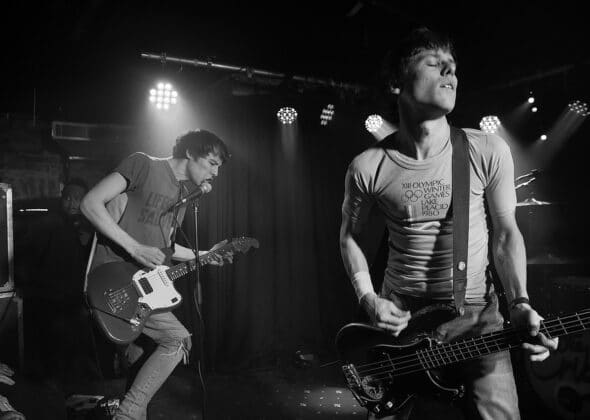
Johnny Marr’s guitar skills were not just on show with The Smiths. Throughout his career, he was in a variety of musical collaborations, each leaving a unique imprint on his guitarist reputation, after allowing him to showcase his ability in different settings.
In this section, we will explore his main collaborations. We will see how they have shaped Marr’s musicality and how they have solidified his standing in the world of guitarists.
Electronic
One of Marr’s first noteworthy collaborations was with the band Electronic, who were formed in the late 1980s. Teaming up with Bernard Sumner of New Order, Marr contributed his guitar wizardry to the electronic and dance-oriented sound of the group.
Their collaboration resulted in hit singles like “Getting Away with It” and “Disappointed,” demonstrating Marr’s adaptability to different musical genres.The band would end up working with other artists such as Neil Tennant of The Pet Shop Boys, Karl Barton of Kraftwerk, and Jimi Goodwin of the Doves.
This band showed perfectly how Marr’s guitar playing could be utilised in other settings, and predominantly how his songwriting expanded a multitude of genres.
The The
In the late ’80s, Marr joined forces with Matt Johnson in the band The The. His guitar work in albums like “Dusk” and “Mindbomb” showcased a more bluesy and experimental side of Marr’s playing, diverging from the jangly pop sound that he was renowned for with The Smiths.
As we mentioned before, Marr avoided this sort of sound with The Smiths. Here he showcased he could in fact do that but instead chose not to. Marr however possesses the same intricate weaving lines, despite this move, they were just slightly less active.
Marr would leave the band in 1994.
Modest Mouse
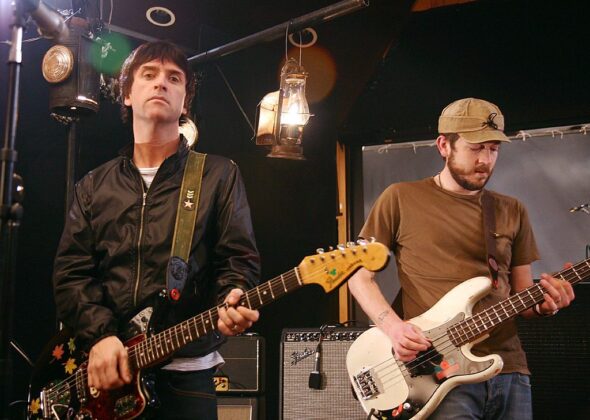
Marr’s collaboration with the American indie rock band Modest Mouse introduced his guitar skills to a new generation of listeners and raise his figure in another country. Stepping in in 2006, Marr joined to fill the gap left by Dan Galluci.
His contributions to the album “We Were Dead Before the Ship Even Sank” earned critical acclaim and demonstrated his ability to adapt his playing style to fit within a different style of guitar playing. This collaboration is probably his most notable.
The Cribs
Another significant collaboration in Marr’s career was with the Yorkshire based indie rock band The Cribs. Joining the band in the Marr brought his distinctive guitar style to their sound, contributing to album “Ignore the Ignorant.” Marr’s work with The Cribs further solidified his reputation as a guitarist willing to adapt.
Marr Viewed the his work with The Cribs as as good as any of his other work. Marr’s guitar skills and stage presence were highly praised by the band members, and he left in 2011 on good terms.
Johnny Marr the solo artist
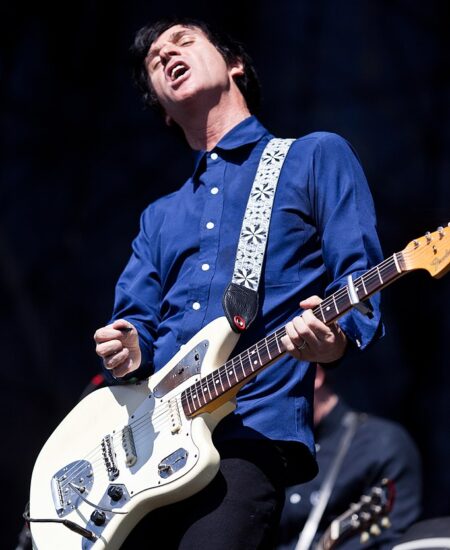
In addition to his work with The Smiths and various collaborations, Johnny Marr has also made a significant impact through his solo ventures and session work. Marr’s solo albums have received critical acclaim for their innovation. They are great examples of him maintaining the core elements that make his guitar work unmistakable.
Albums such as The Messenger, Playland, Call the Comet, and Fever Dreams pt 1-4 have all reached the top 10 in the UK albums chart. This is an absolute testament to the longevity of his guitar prowess. Listening to tracks like “The Messenger” and “Upstarts” showcase brilliantly how even 30 years on he is excellent at creating memorable guitar hooks.
He doesn’t just sit back and fall into familiarity either. Songs like “Hi Hello” and “Spiral Cities” displayed Marr’s commitment to developing his portfolio. These tracks show his ability to write in different sonic settings. Again it is this diversity in his playing that solidifies him as a guitar great.
Sessions with Marr
The final set of works we must consider when looking at how good Marr is as a guitarist is his session work. Marr has worked with an abundance of artists. The list of artists is so long in fact it would be impossible to list here. What I will do is select a few artists he has appeared on the albums of; Oasis, Pet Shop Boys, Pearl Jam, The Charlatans, Drake, Blondie, and John Frusciante.
One absolute testament to Marr’s guitar playing, however, is his work with Hans Zimmer. Marr’s collaboration with renowned composer Hans Zimmer has led to contributions to a multitude of blockbuster film soundtracks. These films include “Inception”, “No Time To Die”, and “The Amazing Spider-Man 2.”
Marr’s atmospheric and evocative guitar work is adored by Zimmer who uses it to add depth to his film soundtracks. His inclusion in these films further showcasing his versatility, and his ability to play the guitar in a way to service an overall goal.
To be honest, being trusted by Hans Zimmer is a compliment in itself. If you are interested here is the full list of session work for Marr.
Johhny's influence on the current generation
Johnny Marr’s impact on modern guitarists is undeniable. His innovative style and distinctive sound has served as a source of inspiration for a multitude of artists ranging from Oasis to Radiohead, and from Alex Turner to St.Vincent. Marr’s guitar style, characterized by jangly rhythms, intricate lead lines, and innovative songwriting, rears its head in the playing of a multitude of other artists, and only more will appear.
When we ask is Johnny Marr a good guitarist, we only have to look at his influence. Marr may have impacted all these artists, but it could be argued that Marr truly conceived the current landscape of all subsequent indie musicians.
He can rightly be called a guitar legend because of this.
So... Is Johnny Marr a good guitarist?
Johnny Marr’s is a fantastic guitarist. His status is thanks to his versatility, innovation, and enduring influence in the world of music. His playing didn’t only shaped bands like The Smiths, but have also enriched a diverse range of musical projects through his collaborative ventures. Moreover, the admiration he has garnered from fellow musicians further cements his legacy as a great guitarist. This has all concluded in him having an astonishingly unparralled affect on indie and alternative rock.
So the answer to “is Johnny Marr undoubtedly a great guitarist?” The answer, is a definitive “yes.” Whether through his iconic riffs with The Smiths, his innovative contributions to various bands, or his adaptability as a collaborator, Johnny Marr’s guitar playing continues to inspire and resonate with audiences worldwide.
Johnny Marr is an excellent guitarist!
You May Also Like

The 13 Best Alternative Rock Basslines
July 31, 2023
17 Best Cage the Elephant Songs
September 10, 2023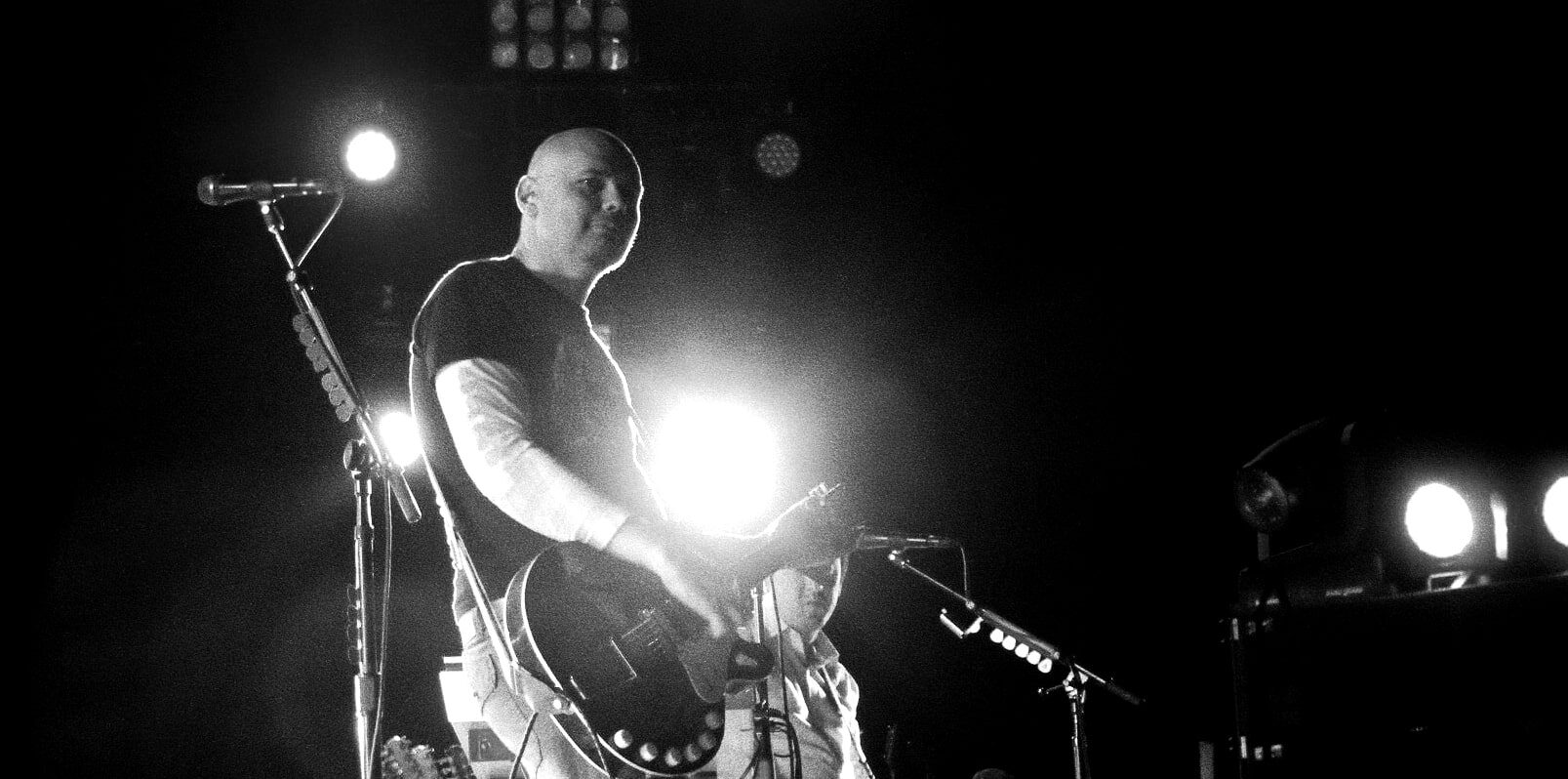


One Comment
Pingback: